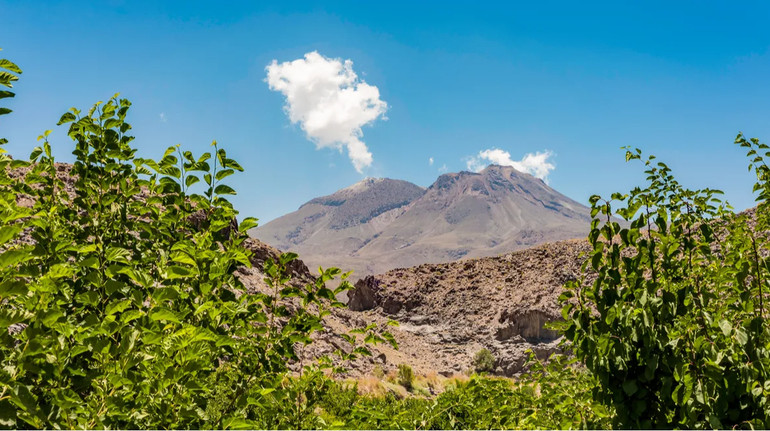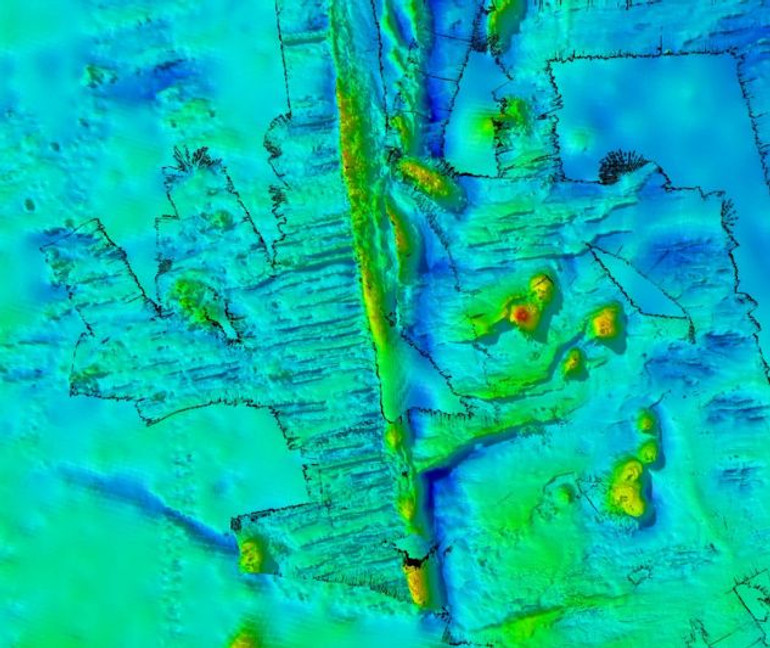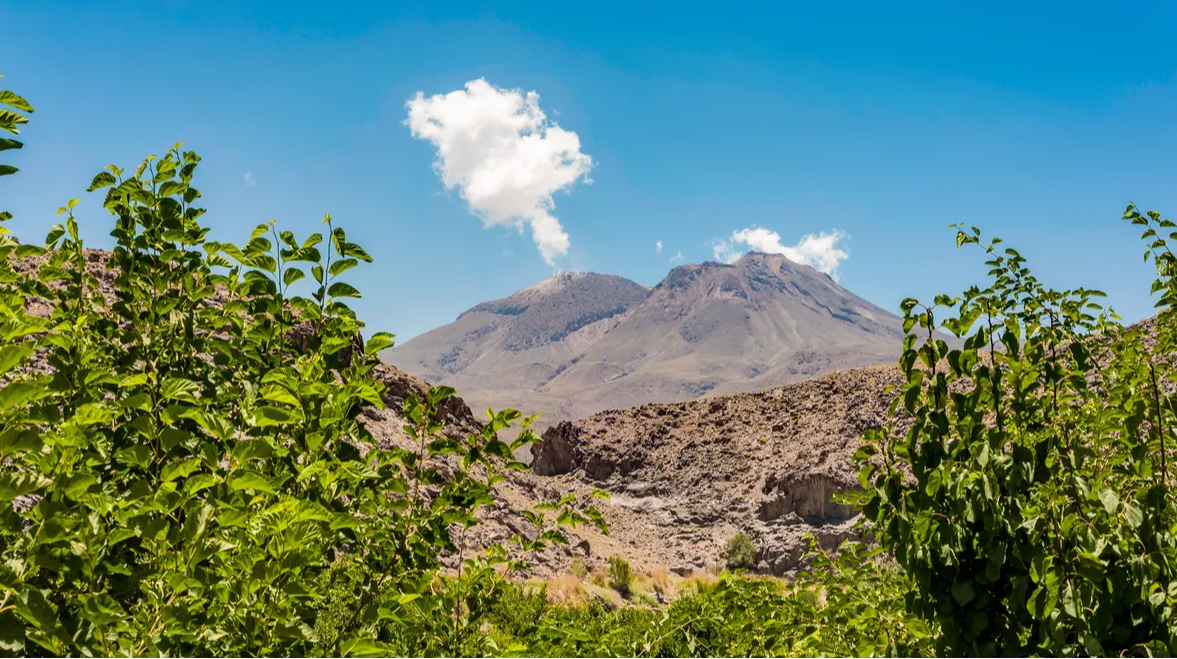“
 Scientists say that the still inactive Taftan volcano in Iran may pose a danger
Scientists say that the still inactive Taftan volcano in Iran may pose a danger
Photo: Tripper92/Shutterstock.com
About this writes publication of IFLScience with reference to research, published in the journal Geophysical Research Letters.
“Our findings show that Taftan is more active than previously thought,” – report the authors of the study.
Taftan is a 3,940-meter-high stratovolcano in southeastern Iran. It is considered the only active member of the Makran continental volcanic arc (a trio of volcanoes on the border of Iran and Pakistan), created by the Arabian Plate, which is slowly sliding under the Eurasian Plate.
Although the volcano remains weakly active, it is not characterized by aggressive behavior. There were reports of it emitting smoke in 1902, and unconfirmed claims of a small lava flow in 1993, but there is no recorded history of its eruption. Scientists previously claimed that the last major eruption occurred about 700,000 years ago – long before the evolution of Homo sapiens.
However, this giant may not be as gentle as previously hoped. In a new study, volcanologists used satellite data to show that the summit of the Taftan volcano grew by about 9 centimeters between July 2023 and May 2024. The increase has not yet stopped.
As the authors of the study note, surprisingly, this swelling appears to be “spontaneous” and “without cause”. Volcanic activity can be caused by a variety of factors, from earthquakes disrupting the pipeline system to changes in groundwater. Even a period of intense rainfall can cause such changes.
But in Tuftan’s case, there is no obvious culprit. This led the researchers to suggest that the swelling may be caused by magma rising through a pocket of hot water and steam deep underground.
“We hypothesize that changes in gas permeability in the shallow part of the volcanic structure and/or undetected deep magmatic intrusions may have led to increased pressure in the volume of the hydrothermal system at a depth of about 460-630 meters below the surface,” – write the authors of the study.
This does not mean that an explosive eruption can happen any day. However, it shows that Tuftan is not a sleepy “zombie” as many believed. If that’s the case, volcanologists and authorities should be on high alert, beefing up monitoring systems and preparing for the day when Taftan actually wakes up.
“This highlights the urgent need to review the current level of volcanic risk of the Makran subduction volcanic arc, i.e. the creation of volcano monitoring networks, the creation and/or updating of geological hazard maps and other measures aimed at reducing volcanic risks“, the scientists added.
We used to told about a volcano in Alaska that began to rumble after a century of silence.

”, — write: www.pravda.com.ua
 Scientists say that the still inactive Taftan volcano in Iran may pose a danger
Scientists say that the still inactive Taftan volcano in Iran may pose a danger
Photo: Tripper92/Shutterstock.com
About this writes publication of IFLScience with reference to research, published in the journal Geophysical Research Letters.
“Our findings show that Taftan is more active than previously thought,” – report the authors of the study.
Taftan is a 3,940-meter-high stratovolcano in southeastern Iran. It is considered the only active member of the Makran continental volcanic arc (a trio of volcanoes on the border of Iran and Pakistan), created by the Arabian Plate, which is slowly sliding under the Eurasian Plate.
Although the volcano remains weakly active, it is not characterized by aggressive behavior. There were reports of it emitting smoke in 1902, and unconfirmed claims of a small lava flow in 1993, but there is no recorded history of its eruption. Scientists previously claimed that the last major eruption occurred about 700,000 years ago – long before the evolution of Homo sapiens.
However, this giant may not be as gentle as previously hoped. In a new study, volcanologists used satellite data to show that the summit of the Taftan volcano grew by about 9 centimeters between July 2023 and May 2024. The increase has not yet stopped.
As the authors of the study note, surprisingly, this swelling appears to be “spontaneous” and “without cause”. Volcanic activity can be caused by a variety of factors, from earthquakes disrupting the pipeline system to changes in groundwater. Even a period of intense rainfall can cause such changes.
But in Tuftan’s case, there is no obvious culprit. This led the researchers to suggest that the swelling may be caused by magma rising through a pocket of hot water and steam deep underground.
“We hypothesize that changes in gas permeability in the shallow part of the volcanic structure and/or undetected deep magmatic intrusions may have led to increased pressure in the volume of the hydrothermal system at a depth of about 460-630 meters below the surface,” – write the authors of the study.
This does not mean that an explosive eruption can happen any day. However, it shows that Tuftan is not a sleepy “zombie” as many believed. If that’s the case, volcanologists and authorities should be on high alert, beefing up monitoring systems and preparing for the day when Taftan actually wakes up.
“This highlights the urgent need to review the current level of volcanic risk of the Makran subduction volcanic arc, i.e. the creation of volcano monitoring networks, the creation and/or updating of geological hazard maps and other measures aimed at reducing volcanic risks“, the scientists added.
We used to told about a volcano in Alaska that began to rumble after a century of silence.

